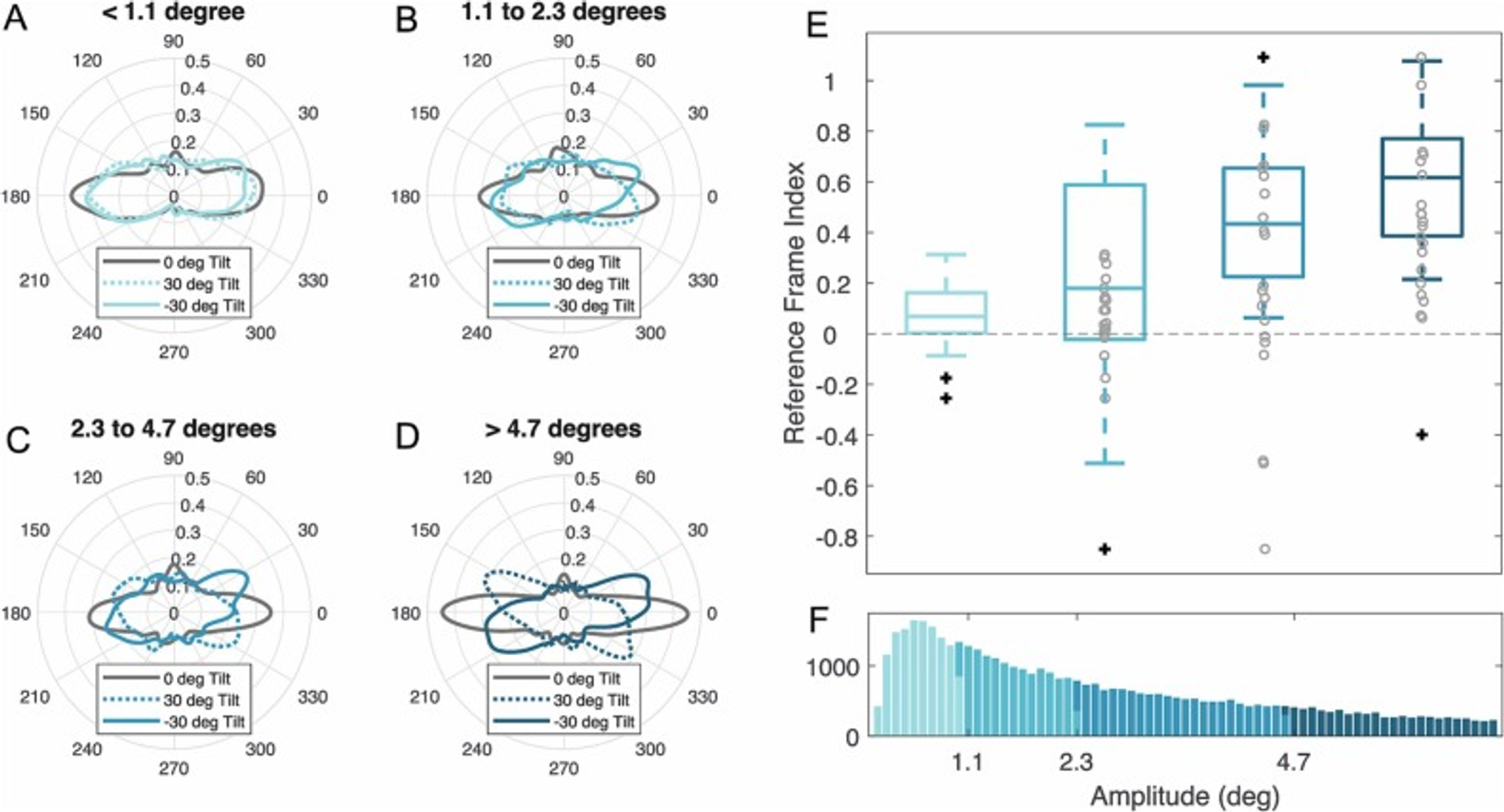
//
The influence of scene tilt on saccade directions is amplitude dependent
Search
Try Notion
The influence of scene tilt on saccade directions is amplitude dependent
Authors text
Reeves, Stephanie, Otero-Millan, Jorge
Journal/Book
Journal of the Neurological Sciences
Year
2023
Abstract
When exploring a visual scene, humans make more saccades in the horizontal direction than any other direction. While many have shown that the horizontal saccade bias rotates in response to scene tilt, it is unclear whether this effect depends on saccade amplitude. We addressed this question by examining the effect of image tilt on the saccade direction distributions recorded during freely viewing natural scenes. Participants (n = 20) viewed scenes tilted at −30°, 0°, and 30°. Saccade distributions during free viewing rotated by an angle of 12.1° ± 6.7° (t(19) = 8.04, p < 0.001) in the direction of the image tilt. When we partitioned the saccades according to their amplitude we found that small amplitude saccades occurred most in the horizontal direction while large amplitude saccades were more oriented to the scene tilt (p < 0.001). To further study the characteristics of small saccades and how they are affected by scene tilt, we looked at the effect of image tilt on small fixational saccades made while fixating a central target amidst a larger scene and found that fixational saccade distributions did not rotate with scene tilt (−0.3° ±1.7° degrees; t(19) = −0.8, p = 0.39). These results suggest a combined effect of two reference frames in saccade generation: one egocentric reference frame that dominates for small saccades, biases them horizontally, and may be common for different tasks, and another allocentric reference frame that biases larger saccades along the orientation of an image during free viewing.
Citation
Empty
Broad Topic
Ocular motor control